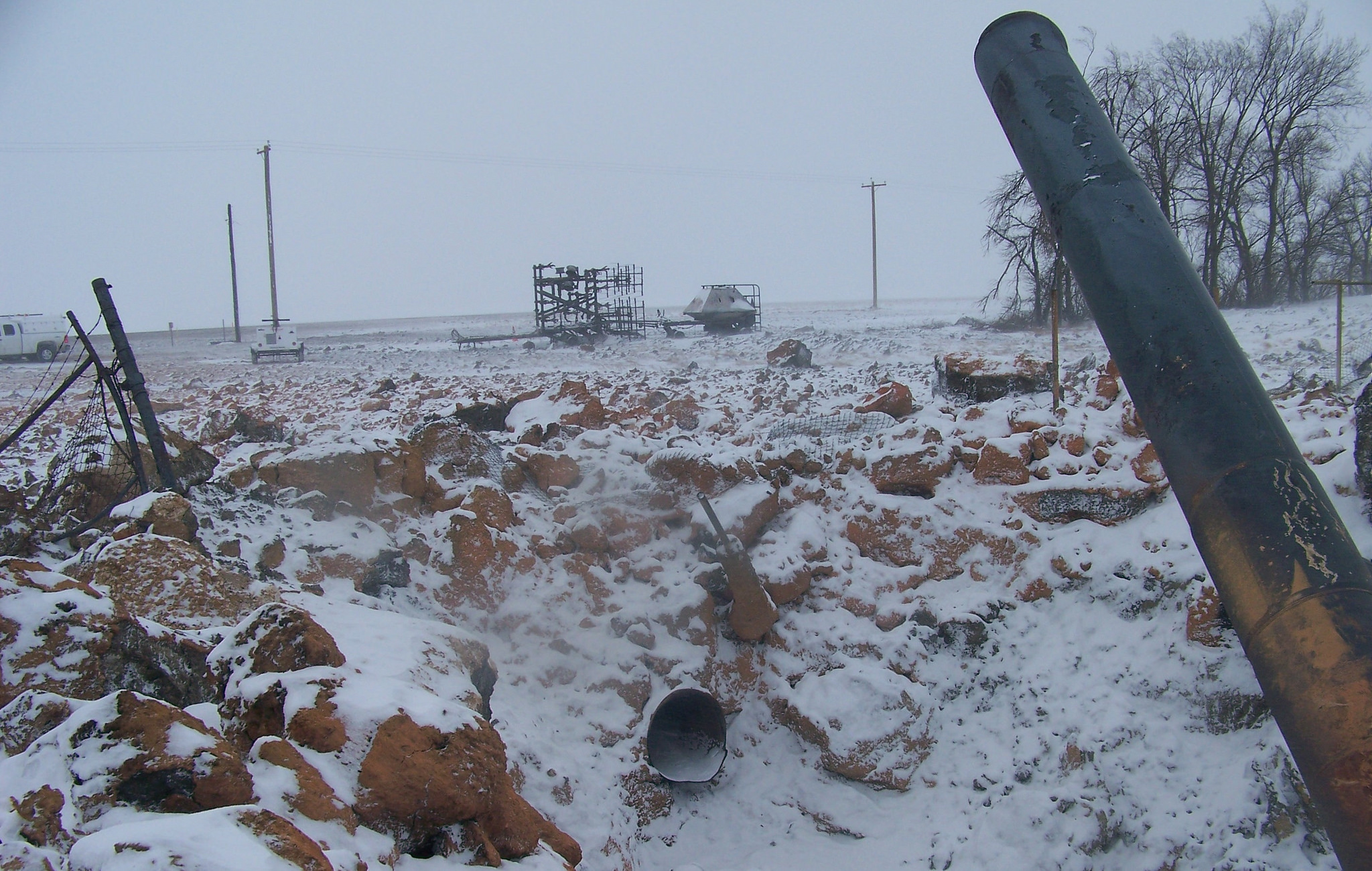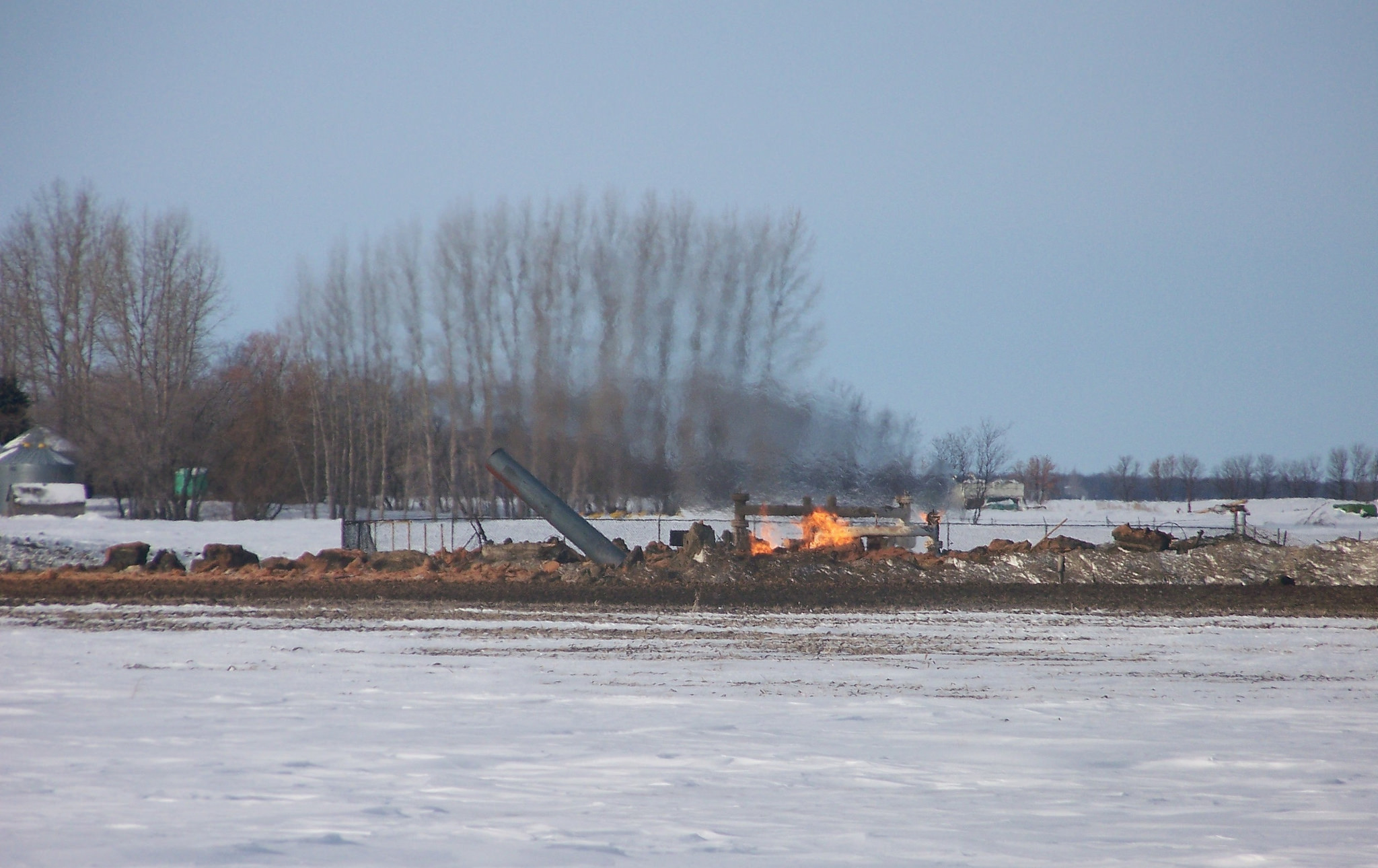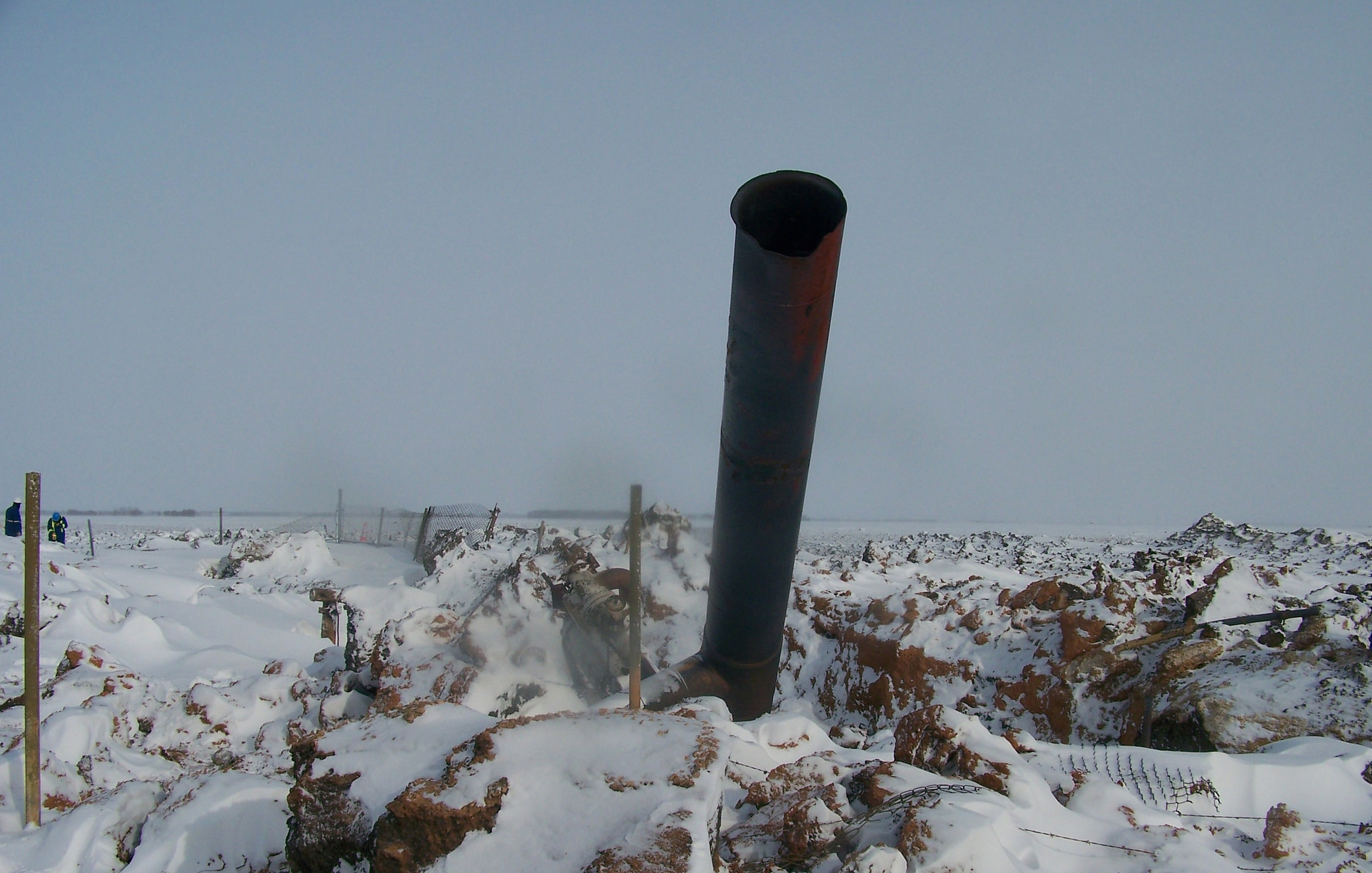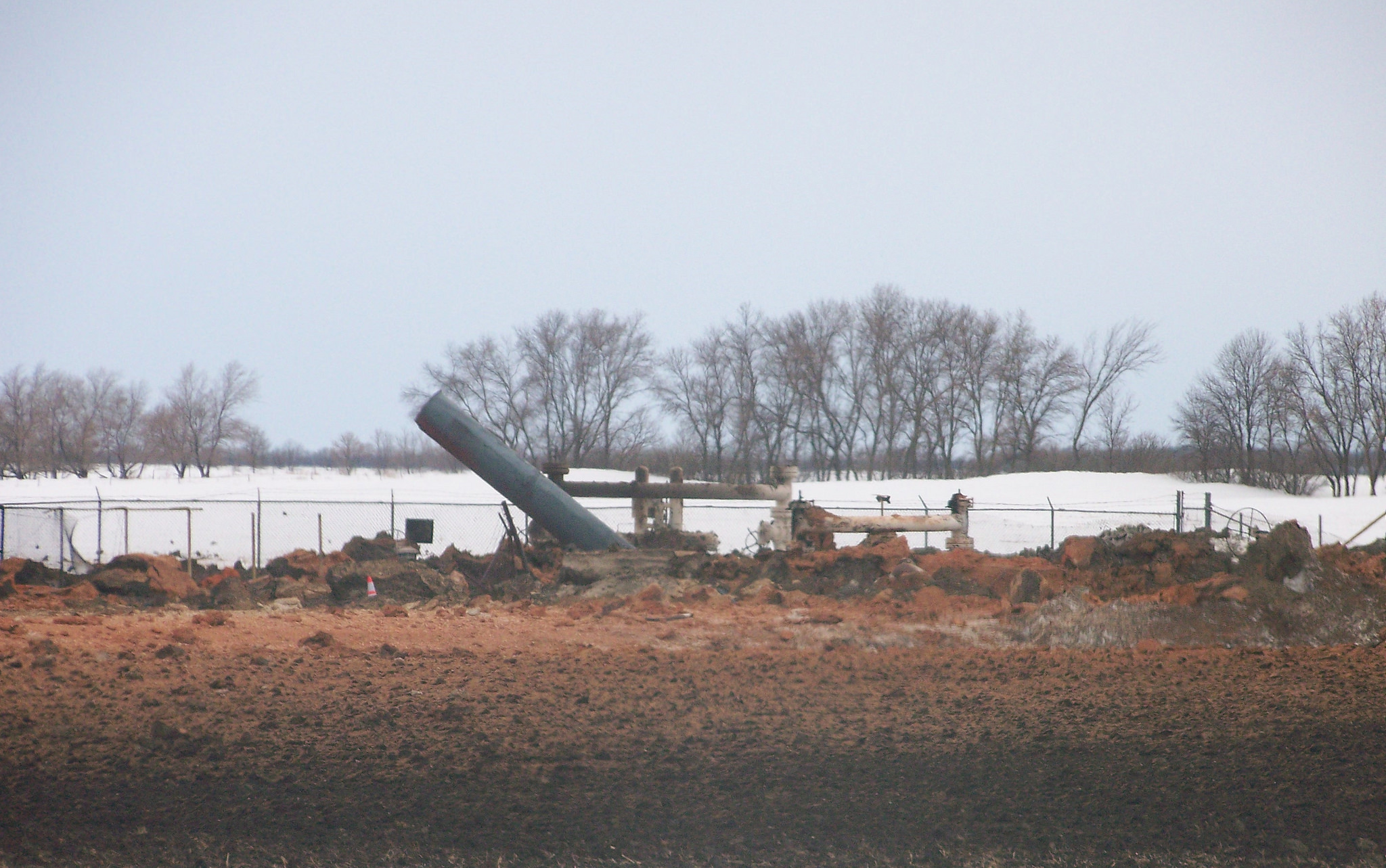Natural gas pipeline rupture
TransCanada PipeLines Limited
Line 400-1 at Mainline Valve Site 402
Near Otterburne, Manitoba
At approximately 0115 Central Standard Time on 25 January 2014, a natural gas pipeline rupture and ignition occurred on TransCanada PipeLines Limited’s 762 mm (30-inch) Line 400-1 at the site of Mainline Valve 402 near Otterburne, Manitoba. A crater measuring approximately 24 metres long by 12.5 metres wide was created, and debris was ejected approximately 100 metres from the rupture site. Natural gas burned for approximately 12 hours. Five residences in the immediate vicinity were evacuated, and Provincial Highway 303 was closed until the fire was extinguished. There were no injuries.
Media materials
News release
Pre-existing defect led to January 2014 pipeline rupture in Otterburne, Manitoba
Read the news release
Deployment notice
Transportation Safety Board of Canada deploys an investigator to a pipeline accident near Otterburne, Manitoba
Winnipeg, Manitoba, 25 January 2014 — The Transportation Safety Board of Canada (TSB) deploys an investigator to a pipeline accident near Otterburne, Manitoba. The TSB will gather information and assess the occurrence.
Investigation information
Download high-resolution photos from the TSB Flickr page.
Class of investigation
This is a class 3 investigation. These investigations analyze a small number of safety issues, and may result in recommendations. Class 3 investigations are generally completed within 450 days. For more information, see the Policy on Occurrence Classification.
TSB investigation process
There are 3 phases to a TSB investigation
- Field phase: a team of investigators examines the occurrence site and wreckage, interviews witnesses and collects pertinent information.
- Examination and analysis phase: the TSB reviews pertinent records, tests components of the wreckage in the lab, determines the sequence of events and identifies safety deficiencies. When safety deficiencies are suspected or confirmed, the TSB advises the appropriate authority without waiting until publication of the final report.
- Report phase: a confidential draft report is approved by the Board and sent to persons and corporations who are directly concerned by the report. They then have the opportunity to dispute or correct information they believe to be incorrect. The Board considers all representations before approving the final report, which is subsequently released to the public.
For more information, see our Investigation process page.
The TSB is an independent agency that investigates air, marine, pipeline, and rail transportation occurrences. Its sole aim is the advancement of transportation safety. It is not the function of the Board to assign fault or determine civil or criminal liability.



